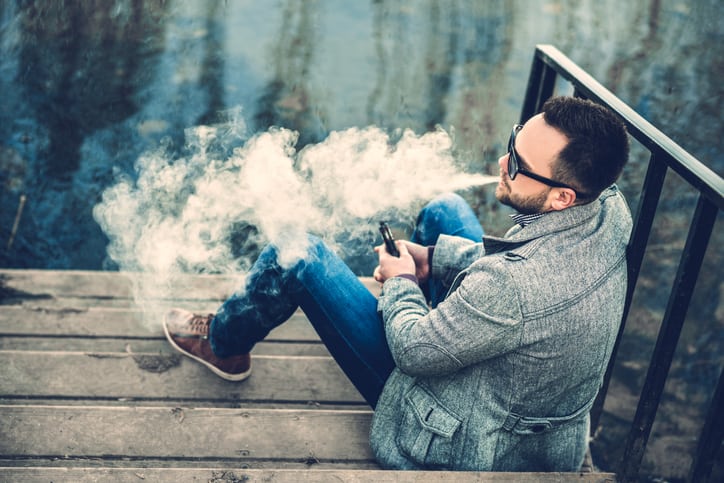CDC Confirms Black Markets, not “Vaping,” Caused Outbreak

 A new report from the U.S. Centers for Disease Control and Prevention (CDC) puts the final nail in the coffin of the idea that the spate of lung injuries that occurred beginning last summer were caused by “vaping.” The CDC admitted this week that the injuries appear to be exclusively linked to marijuana vapes—not nicotine e-cigarettes, most of which were purchased on the black market, a fact that CEI knew nearly six months ago.
A new report from the U.S. Centers for Disease Control and Prevention (CDC) puts the final nail in the coffin of the idea that the spate of lung injuries that occurred beginning last summer were caused by “vaping.” The CDC admitted this week that the injuries appear to be exclusively linked to marijuana vapes—not nicotine e-cigarettes, most of which were purchased on the black market, a fact that CEI knew nearly six months ago.
According to the latest CDC findings, only one in six of the patients with the vaping-related lung injuries reported purchasing THC vapes from commercial sources. Some news outlets have interpreted this to mean that approximately 16 percent of the cases involved legally purchased cannabis vapes. But, as Jacob Sullum at Reason points out, this is incorrect. The CDC’s definition of “commercial” includes not only licensed dispensaries, but also pop-up shops, which are decidedly illegal in states with legal marijuana. Furthermore, the definition includes “stores,” without clarifying what this means. It is possible “store” includes bodegas and corner shops, which have been known to sell illegal drugs.
Thus, excluding the 3 percent of consumers who bought their THC at pop-up shops and the 2 percent who purchased them at “stores” other than dispensaries, only 11 percent of the cases reported buying their products at commercial outlets. Even that figure may be inflated, as it only reflects behavior reported by patients who may, for whatever reason, choose not to report purchasing or using cannabis products obtained from non-commercial sources.
As Sullum notes, it is still entirely possible that some of the cases were caused by legally purchased cannabis at licensed outlets. The manufacturers of cannabis products or components may have unkowingly adulterated their products with the ingredient or ingredients that caused the lung injuries. They should be held accountable for this, as all legal purveyors would be. But that does not mean that cannabis vapes—certainly not vaping as an entire category—is dangerously underregulated. Even sellers of vegetables sometimes err, causing widespread outbreaks of dangerous food-borne pathogens. The response in those cases is neither panic nor a leap to ban all lettuce. It merely calls for better standards and, perhaps, different types of oversight.
Instead of such a measured response to improve consumer safety, the outbreak of “vaping-linked” lung injuries prompted hysteria, leading to passage of bans on nicotine e-cigarettes—not even responsible for the outbreak—and a federal prohibition on all flavored e-cigarettes (excluding only tobacco and menthol.) These bans were pushed by dogmatic anti-tobacco interests, who exploited the early confusion over the outbreak.
The evidence that black market cannabis—not nicotine—vapes were the cause of the illnesses led the CDC this week to finally drop its long-standing unhelpful recommendation that people avoid all e-cigarette and vaping products. But, this concession has done little to slow the march toward a new drug war on e-cigarettes. Even this latest confession from CDC, is unlikely to cause any reversals in state or federal policy on e-cigarettes.
Instead of instituting better safety regulations and incentivizing consumers to purchase products legally, U.S. lawmakers have chosen to embrace prohibition, once again. As I wrote in July, this will do nothing to prevent future outbreaks caused by black market products. In fact, by creating an even larger black market, including not only cannabis, but also nicotine e-cigarettes, bans all but guarantee that future outbreaks will be more frequent and widespread.
(This post was updated on January 21, 2020.)